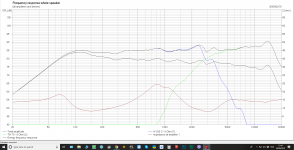😀 Didn't realise thisI seem to recall that Basildon, Essex is the most typical English Constituency. Whatever Basildon thinks is what the Country thinks. 😀
Totally agree with you🙂All deeply confusing. We just retire to good music played on decent speakers.
So this Seas Woofer is better option than W 200 S with the same crossover?
You really don't know till you try it.
This is a bit of a classic three-way: SEAS-3-Way-Classic
Everything about a 3-way is better than two-way IMO. Goes loud without distortion. The small mid has better dispersion.
Troels Gravesen worried about bass cone breakup in his 3-way. For sure, a polycone has less breakup than a paper cone.
Seas P21RE/P H0942-08 Woofer. H0313 2015 remake
3-ways have an unexciting sound. Perhaps because they have less distortion than a 2-way. They sound quiet, which encourages you to turn them up loud...😱
I really don't think choice of bass drivers is all that important in a 3-way. Everything is in it's comfort zone and works well.
This is a bit of a classic three-way: SEAS-3-Way-Classic
Everything about a 3-way is better than two-way IMO. Goes loud without distortion. The small mid has better dispersion.
Troels Gravesen worried about bass cone breakup in his 3-way. For sure, a polycone has less breakup than a paper cone.
Seas P21RE/P H0942-08 Woofer. H0313 2015 remake
3-ways have an unexciting sound. Perhaps because they have less distortion than a 2-way. They sound quiet, which encourages you to turn them up loud...😱
I really don't think choice of bass drivers is all that important in a 3-way. Everything is in it's comfort zone and works well.
I guess I have to try them, and I will. 3 way speakers will be another projectYou really don't know till you try
 I will update soon🙂Have a good weekend, and thanks a lot for your help
I will update soon🙂Have a good weekend, and thanks a lot for your help
I suppose that with prior planning, we could build a decent two-way and later convert to a three-way. 🙂
Such is the old SEAS kit Njord:
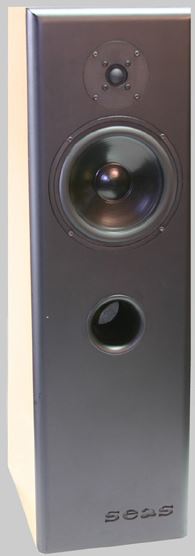
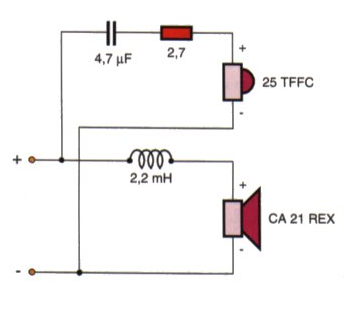
IMO, not the greatest design ever, but probably does a few good things. Modern drivers are probably the bass SEAS CA22RNX and a 27TFFC tweeter.
Later add a mid and a decent crossover. Voila, SEAS-3-Way-Classic
Remember the 6 P's. Prior planning prevents "**** Pauvre" performance. 😀
Such is the old SEAS kit Njord:
IMO, not the greatest design ever, but probably does a few good things. Modern drivers are probably the bass SEAS CA22RNX and a 27TFFC tweeter.
Later add a mid and a decent crossover. Voila, SEAS-3-Way-Classic
Remember the 6 P's. Prior planning prevents "**** Pauvre" performance. 😀
Mission completed.They sound beautiful....at least to me😀 Thanks a lot for the help Steve

Attachments
Last edited:
Congratulations, that is a buatifully looking veneered cabinet. I suppose you are fine with it although could be worth a try to modify the 1.5 mH inductor (0.6mm wire=1.9 Rdc) with a 1 mm wire version. According to Visaton, difference in Rdc between the two is 1.3R.
edit: How is the final circuit now?
edit: How is the final circuit now?
Congratulations, that is a buatifully looking veneered cabinet. I suppose you are fine with it although could be worth a try to modify the 1.5 mH inductor (0.6mm wire=1.9 Rdc) with a 1 mm wire version. According to Visaton, difference in Rdc between the two is 1.3R.
edit: How is the final circuit now?
Yeah, as I said before I'm totally new in this. I didn't realise there is a different thickness wire. I guess less resistance is better in this case? Is it going to be noticeable if I do the change?
Thanks🙂Very nicely done! I'm sure it sounds fantastic.
Is it going to be noticeable if I do the change?
I'm going to take a crack at this.
With the 0.6 mm inductor:
Power going to the driver is down 1.6 dB. You won't hear this, but it means that a lot more power is dissipated by the inductor. For an average power of 15 W into the speaker, 4.8 W is dissipated in the inductor.
With the 1 mm inductor:
Power going to the driver is down 0.6 dB. The power dissipated in the inductor is a much smaller percentage of the power going to the speaker. For an average input of 15 W, only 1.9 W is dissipated in the inductor.
Furthermore, you will be able to drive more power into the speaker with the 1 mm inductor (I think by about 22 %).
As far as sensitivity is concerned, sensitivity is 2.2 dB less with the 0.6 mm inductor. Using the theoretical 88 dB for the driver at 1 W, at 2.83 V, the sensitivity is as follows:
0.6 mm: 87.6 dB
1 mm: 89.8 dB
You will need to adjust the tweeter accordingly, but again, with the 1 mm inductor, you will use a smaller value resistor on the tweeter and therefore dissipate less power in that.
I hope I'm accurate...
I think I should just add that I don't think it matters at all. 15 W average power is something massive, probably in the region of 200 W peak power. According to this thread it looks like most people are happy with an average of only a few watts.
Is it going to be noticeable if I do the change?
Thanks🙂
It should be an obvious improvement for the better. Perhaps you can source magnet wire somewhere cheaply and build the inductors yourself. Would be a great exercise though.
I'm going to take a crack at this.
With the 0.6 mm inductor:
Power going to the driver is down 1.6 dB. You won't hear this, but it means that a lot more power is dissipated by the inductor. For an average power of 15 W into the speaker, 4.8 W is dissipated in the inductor.
With the 1 mm inductor:
Power going to the driver is down 0.6 dB. The power dissipated in the inductor is a much smaller percentage of the power going to the speaker. For an average input of 15 W, only 1.9 W is dissipated in the inductor.
Furthermore, you will be able to drive more power into the speaker with the 1 mm inductor (I think by about 22 %).
As far as sensitivity is concerned, sensitivity is 2.2 dB less with the 0.6 mm inductor. Using the theoretical 88 dB for the driver at 1 W, at 2.83 V, the sensitivity is as follows:
0.6 mm: 87.6 dB
1 mm: 89.8 dB
You will need to adjust the tweeter accordingly, but again, with the 1 mm inductor, you will use a smaller value resistor on the tweeter and therefore dissipate less power in that.
I hope I'm accurate...
I think I should just add that I don't think it matters at all. 15 W average power is something massive, probably in the region of 200 W peak power. According to this thread it looks like most people are happy with an average of only a few watts.
It should be an obvious improvement for the better. Perhaps you can source magnet wire somewhere cheaply and build the inductors yourself. Would be a great exercise though.
Thanks a lot for the info guys! To be honest I didn't expect much when I start building them,but they they turn out good at least the cabinets.And with some corrections they sound good as well.Probably I will change the inductors and see if I can hear the difference 🙂
edit: How is the final circuit now?
Sorry I did't saw your question earlier. I was using the optimisation in Boxsim.
Attachments
Mine version of this combo, a bit different approach, woofer is 4 ohm
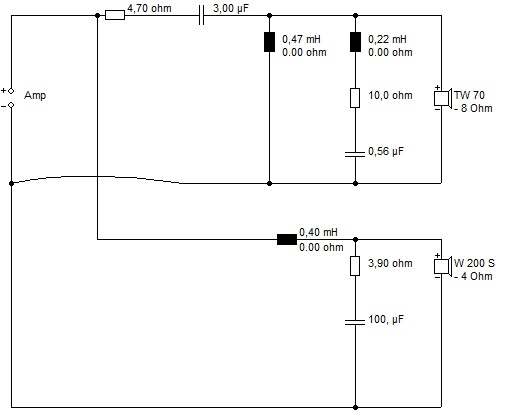
60 liters cab, detachable front (in case I change my mind and build something else 😀 )
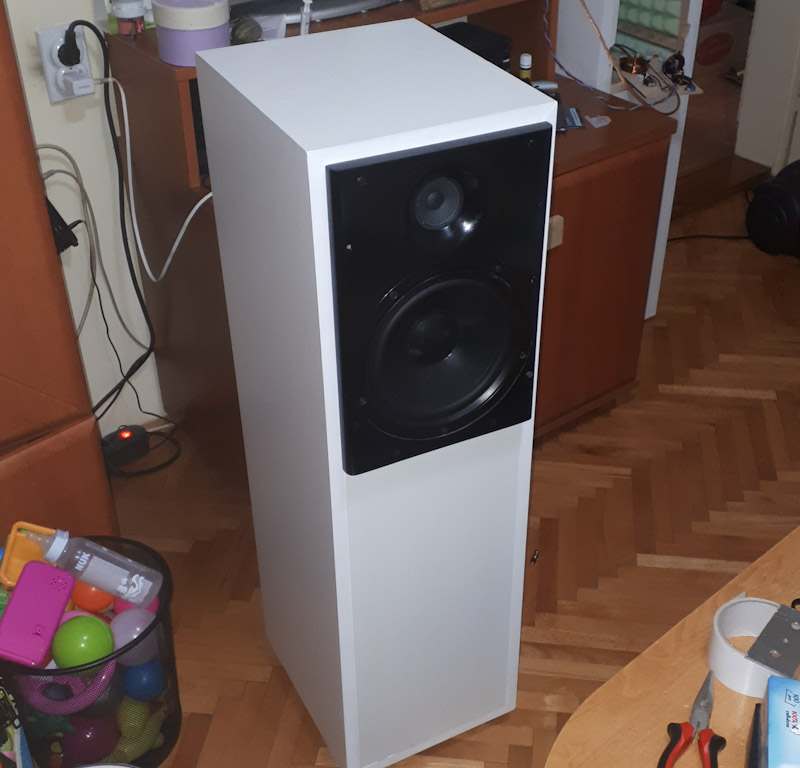
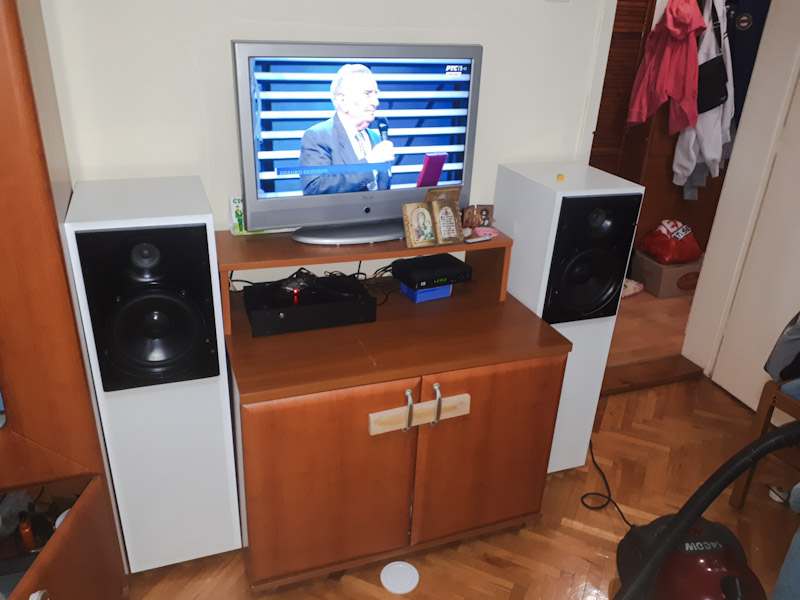
More info here: Visaton W by VladaC (aka WLM La Scala) aka Alex edition, a posle i možda nešto drugo - Project gallery/WIKI - diyAudio.rs

60 liters cab, detachable front (in case I change my mind and build something else 😀 )
More info here: Visaton W by VladaC (aka WLM La Scala) aka Alex edition, a posle i možda nešto drugo - Project gallery/WIKI - diyAudio.rs

Attachments
Great work, acamilicko! 😀
When I first saw the WLM La Scala, I just wondered how those guys were charging 3,000 Euros for something with a ten buck tweeter! 😀
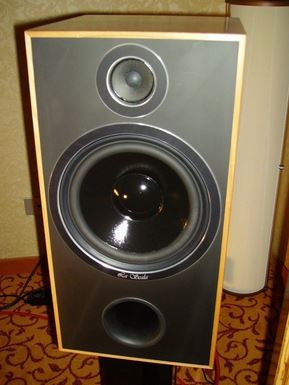
Actually, they reminded me of my first serious £35 speakers back in 1972, the Wharfedale Linton II's:
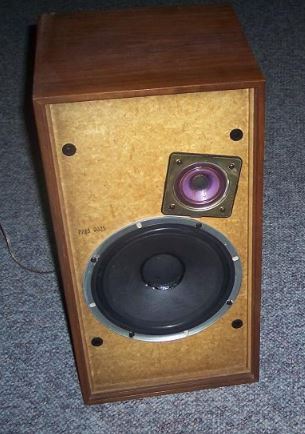
I have tried the Visaton TW70 and the similar Monacor HT-22 tweeters. TBH, I prefer the Monacor:
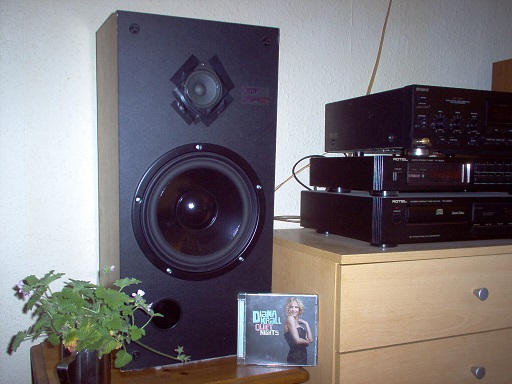
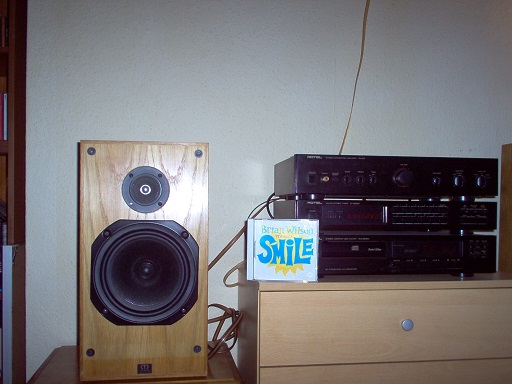
I haven't taken the Monacor apart, but I suspect it doesn't have a spider, The Visaton tweeter does. I only know this because I put a screwdriver through the Visaton tweeter cone one day, by accident! 😱
When I first saw the WLM La Scala, I just wondered how those guys were charging 3,000 Euros for something with a ten buck tweeter! 😀
Actually, they reminded me of my first serious £35 speakers back in 1972, the Wharfedale Linton II's:
I have tried the Visaton TW70 and the similar Monacor HT-22 tweeters. TBH, I prefer the Monacor:
I haven't taken the Monacor apart, but I suspect it doesn't have a spider, The Visaton tweeter does. I only know this because I put a screwdriver through the Visaton tweeter cone one day, by accident! 😱
Last edited:
- Home
- Loudspeakers
- Multi-Way
- Visaton W200S + TW70





